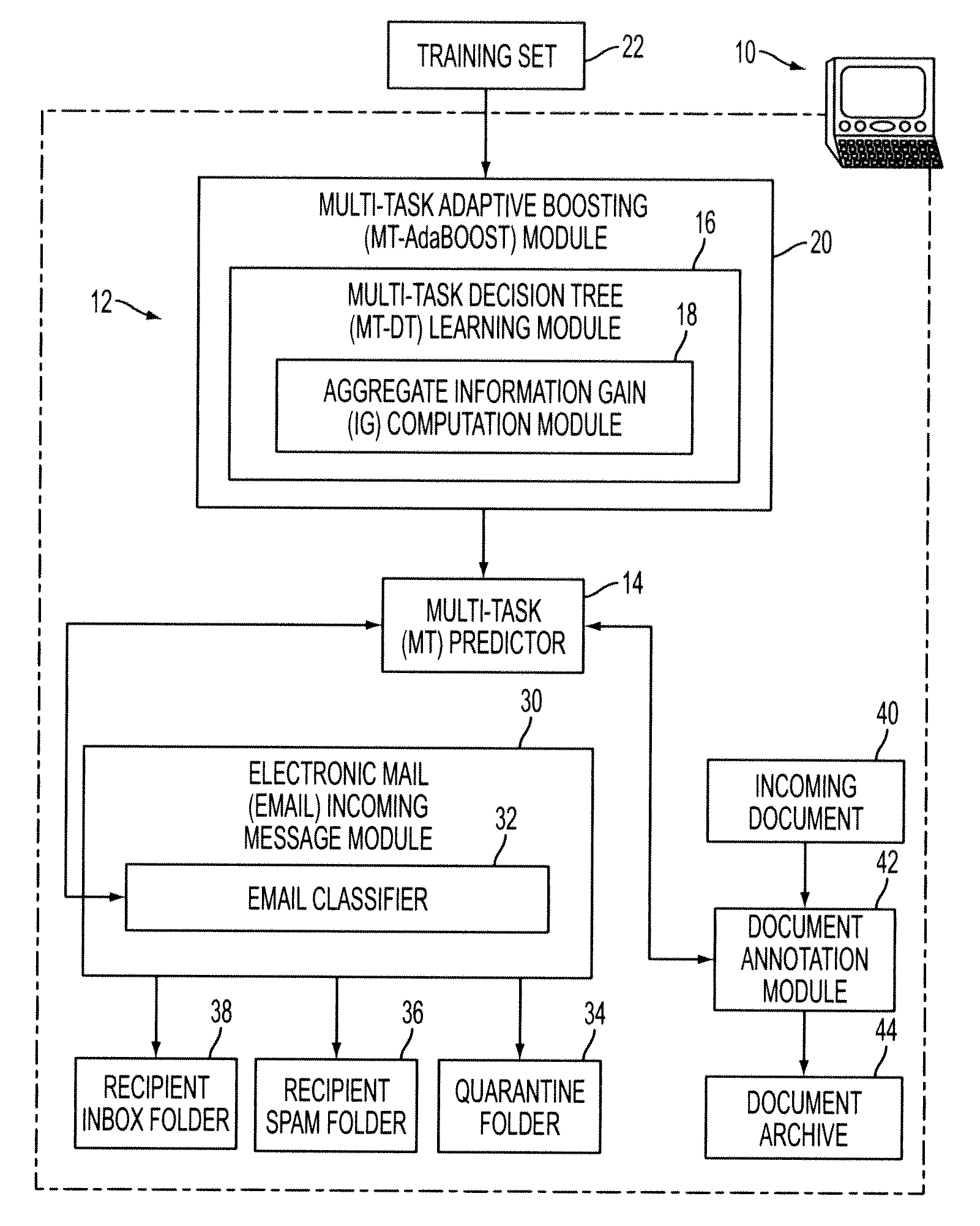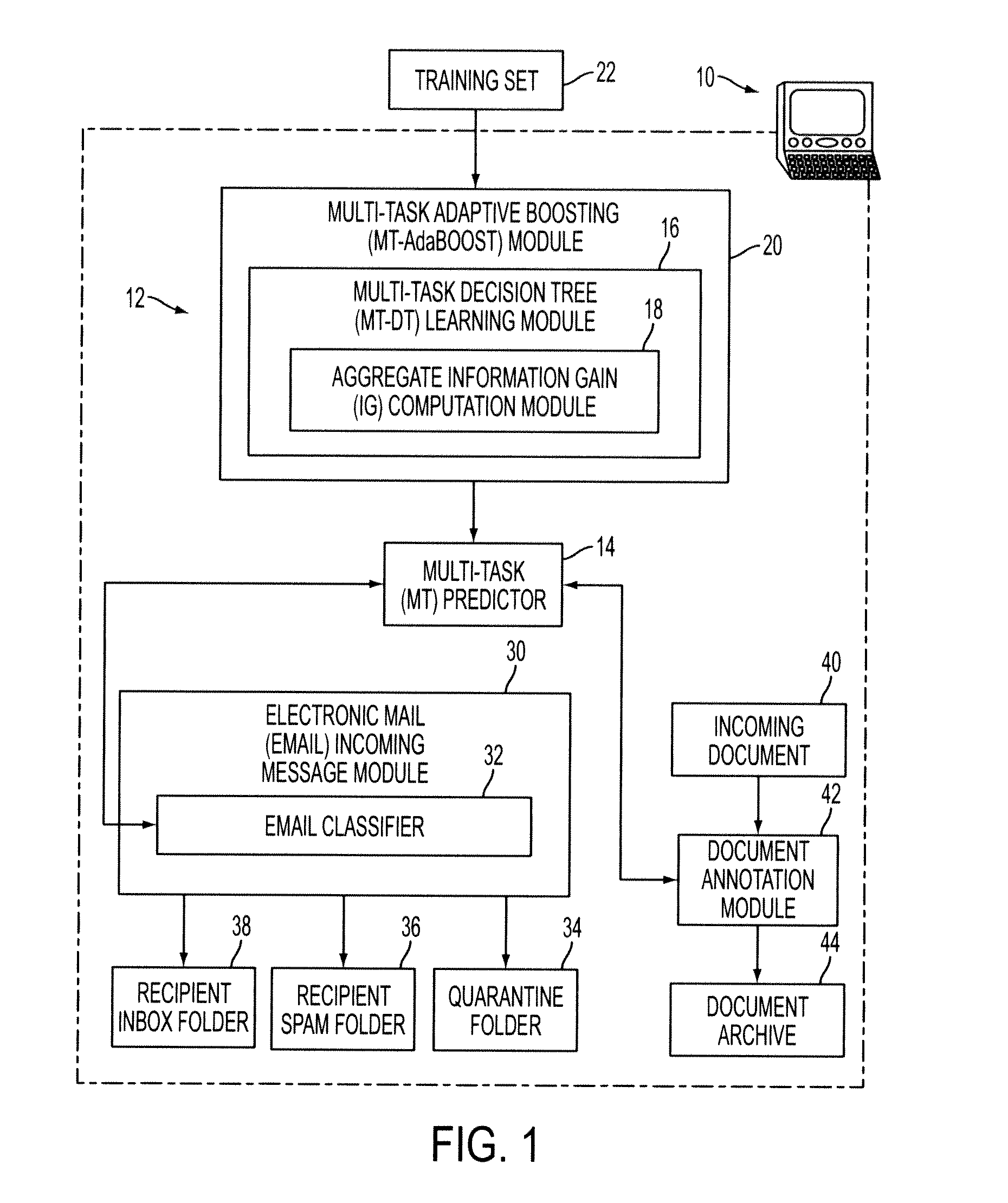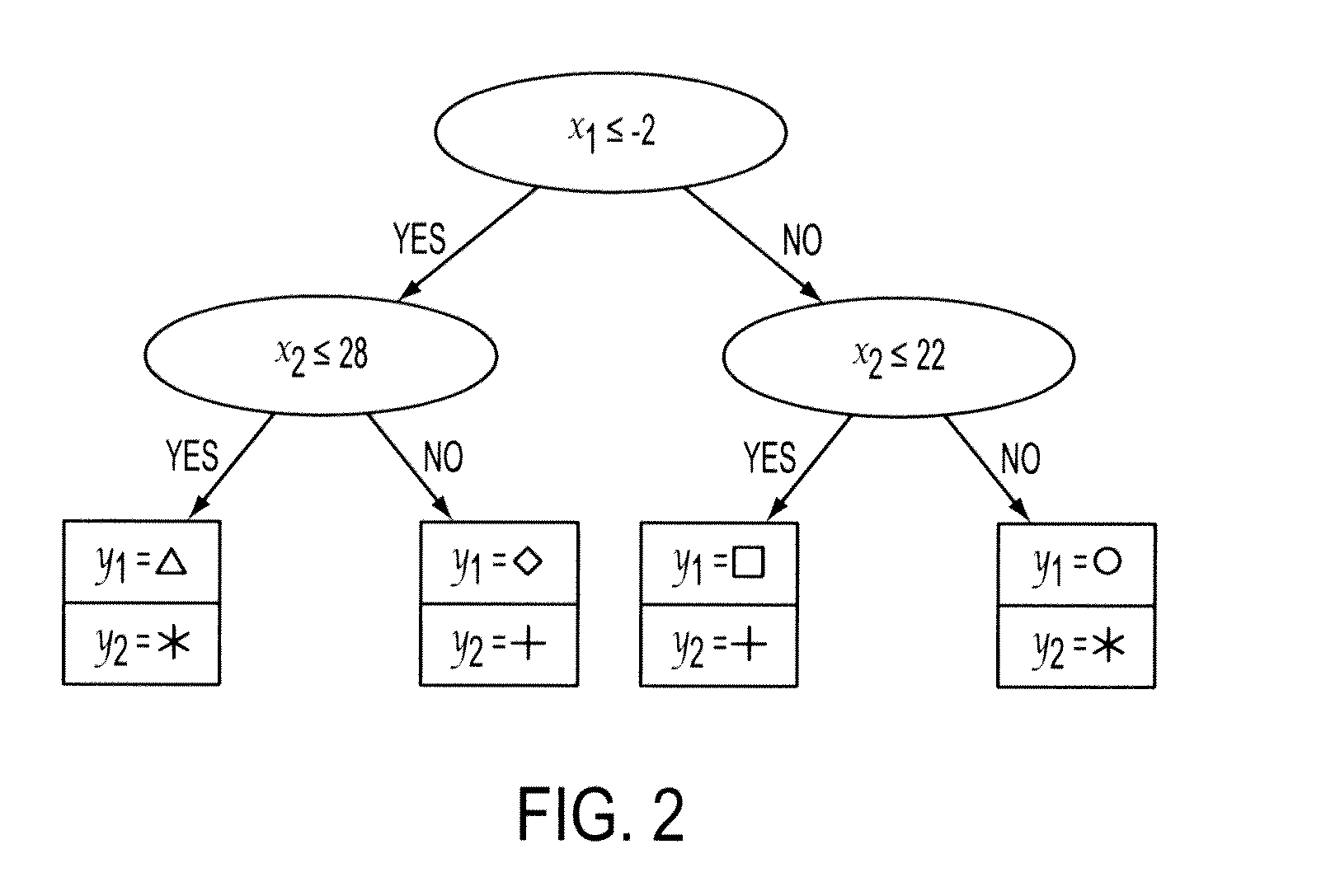Learning multiple tasks with boosted decision trees
a decision tree and learning technology, applied in the field of machine learning arts, can solve problems such as the inability of the applicator to leverage task interrelatedness
- Summary
- Abstract
- Description
- Claims
- Application Information
AI Technical Summary
Benefits of technology
Problems solved by technology
Method used
Image
Examples
Embodiment Construction
[0016]With reference to FIG. 1, a machine learning system is implemented by a suitably programmed computer 10. The machine learning system includes a learning component 12 which generates a predictor 14. The learning component 12 includes a multi-task decision tree (MT-DT) module 16 that learns at least one MT-DT from which the predictor 14 is generated (e.g., from the outputs of the decision leaf nodes of the learned MT-DT). The learning component 12 performs a multi-task learning problem for a set of tasks (where the number of tasks is at least two). Accordingly, the learning of the decision rules for the nodes of the MT-DT suitably employs an aggregate information gain (IG) 18 that aggregates single-task IG values for tasks of the set of tasks. In some embodiments a plurality of MT-DT's are learned and operate as “votes” in the framework of a multi-task adaptive boosting (MT-AdaBoost) module 20 to generate the predictor 14. The machine learning component 12 operates on a training...
PUM
 Login to View More
Login to View More Abstract
Description
Claims
Application Information
 Login to View More
Login to View More - R&D
- Intellectual Property
- Life Sciences
- Materials
- Tech Scout
- Unparalleled Data Quality
- Higher Quality Content
- 60% Fewer Hallucinations
Browse by: Latest US Patents, China's latest patents, Technical Efficacy Thesaurus, Application Domain, Technology Topic, Popular Technical Reports.
© 2025 PatSnap. All rights reserved.Legal|Privacy policy|Modern Slavery Act Transparency Statement|Sitemap|About US| Contact US: help@patsnap.com



